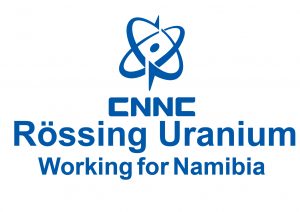Rössing Uranium launches its 2022 Sustainability and Performance Report.
During the official launch of Rössing Uranium’s 2022 Sustainability and Performance Report, the Managing Director, Johan Coetzee highlighted that the year 2022 was indeed a busy one for the mine with the focus being on finalising the Life-of-Mine Extension (LoME) feasibility
study.
A highlight for Rössing in 2022 was the commissioning of the mine’s new water reservoirs at a cost of N$100 million. These reservoirs provide an additional 60,000 cubic meters of storage capacity, enabling operations to continue during sulphur eruptions in the Atlantic Ocean that result in water supply interruptions from the existing desalination plant.
Rössing contributed approximately 4.4% to the world’s primary uranium production in 2022. Namibia is now the 3rd largest primary producer of uranium oxide (U3O8) globally, after Kazakhstan, (who continues to dominate the market from a supply side), and Canada.
Rössing’s production in 2022 was lower compared to 2021. A total of 16.6 million tonnes was mined, compared to 20.7 million tonnes in 2021, with waste and low-grade ore totalling 7.4 million tonnes. The lower mining volumes were due to higher stripping ratios as deeper parts of the pit were mined.
A total of 2,659 metric tonnes uranium oxide was produced, compared to 2,882 metric tonnes in 2021.
In 2022, Rӧssing operated on an approved Life of Mine plan to 2026, but has now completed a bankable feasibility study for a Life of Mine extension to 2036. This can be achieved through a further pushback of the existing SJ Pit (Phase 4), fully utilising the 15-year mining licence granted by the Ministry of Mines and Energy in 2021. The objective of the LoME Feasibility Study was to evaluate and document the technical, practical, and economic feasibility to extend the LoM beyond 2026 and issue a Feasibility Study Report to inform an investment decision by the Rössing Board of Directors.
As a major employer and purchaser of goods and services, Rössing makes a significant annual contribution to economic development in the Erongo Region in particular and to Namibia at large. Rössing’s spend on local suppliers amounted to N$2.54 billion during 2022, (compared to N$2.25 billion in 2021), accounting for 74% of their total procurement expenditure. An interim dividend of N$49.7 million was declared and paid to their shareholders.
No fatalities, permanent disability injuries or significant process safety incidents were recorded in 2022. The All Injury Frequency Rate (AIFR) of 0.43 was lower than the target of 0.48, underlining their commitment to achieving zero harm.
“2023 will be another important year for Rössing Uranium, as we look forward to the implementation of the LoME project, following the Board’s formal approval of the Life of Mine Extension until 2036 in February this year,” said Mr. Johan Coetzee in closing.
To download the Rössing Uranium 2022 Sustainability Report, click on the following link
rossing.com/files/RUL_stakeholder_report2022.pdf
Contributed by Rössing Uranium


